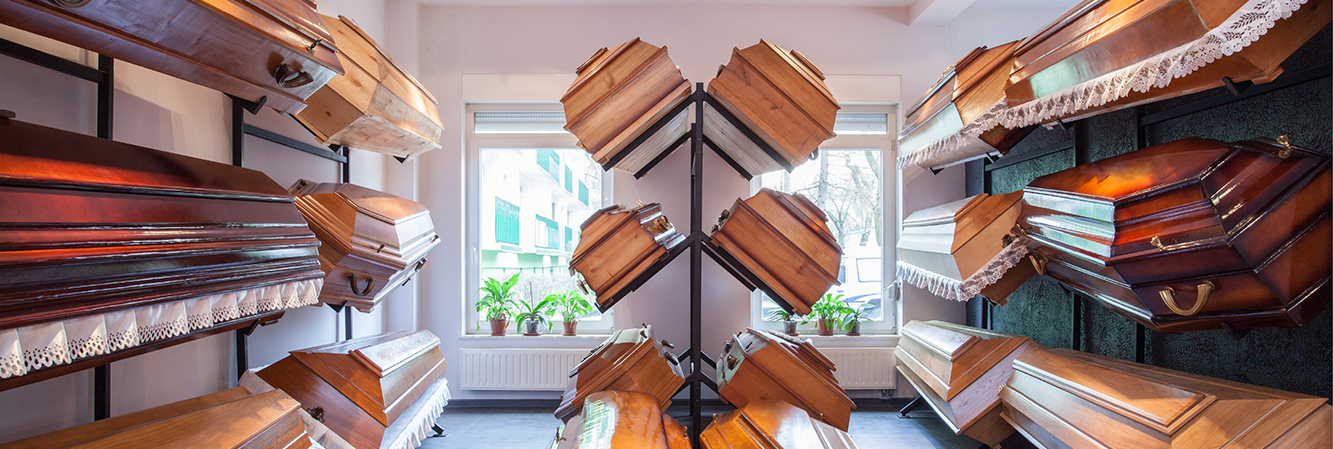Vaults
Outer burial enclosures or vaults often are required by cemeteries for burial. These enclosures are intended to support the ground and avoid the possibility of “grave collapse.” Outer burial enclosures may be wood boxes (rarely used today), grave liners (made of wood or concrete), concrete boxes or vaults. There is a significant difference between vaults and outer burial enclosures. Outer burial enclosures are intended solely to support the soil. They add little protection from outside elements (water, etc.) to the casket.
 Vaults are designed specifically to help protect the casket from surrounding elements, in addition to its function of supporting the soil above the casket and vault. Vaults are manufactured from various metals (steel, stainless steel, copper and bronze), concrete and composite products. Metal, composite and some concrete vaults are manufactured using the “air seal principle.” This can best be tested by inverting a glass (a clear water glass will do) in a fish bowl filled with water. The water, because of air pressure in the glass, will be unable to penetrate into the glass very far. “Air seal” vaults are designed with a base that extends upward into the vault so that water and other elements will be kept away from the casket.
Vaults are designed specifically to help protect the casket from surrounding elements, in addition to its function of supporting the soil above the casket and vault. Vaults are manufactured from various metals (steel, stainless steel, copper and bronze), concrete and composite products. Metal, composite and some concrete vaults are manufactured using the “air seal principle.” This can best be tested by inverting a glass (a clear water glass will do) in a fish bowl filled with water. The water, because of air pressure in the glass, will be unable to penetrate into the glass very far. “Air seal” vaults are designed with a base that extends upward into the vault so that water and other elements will be kept away from the casket.


